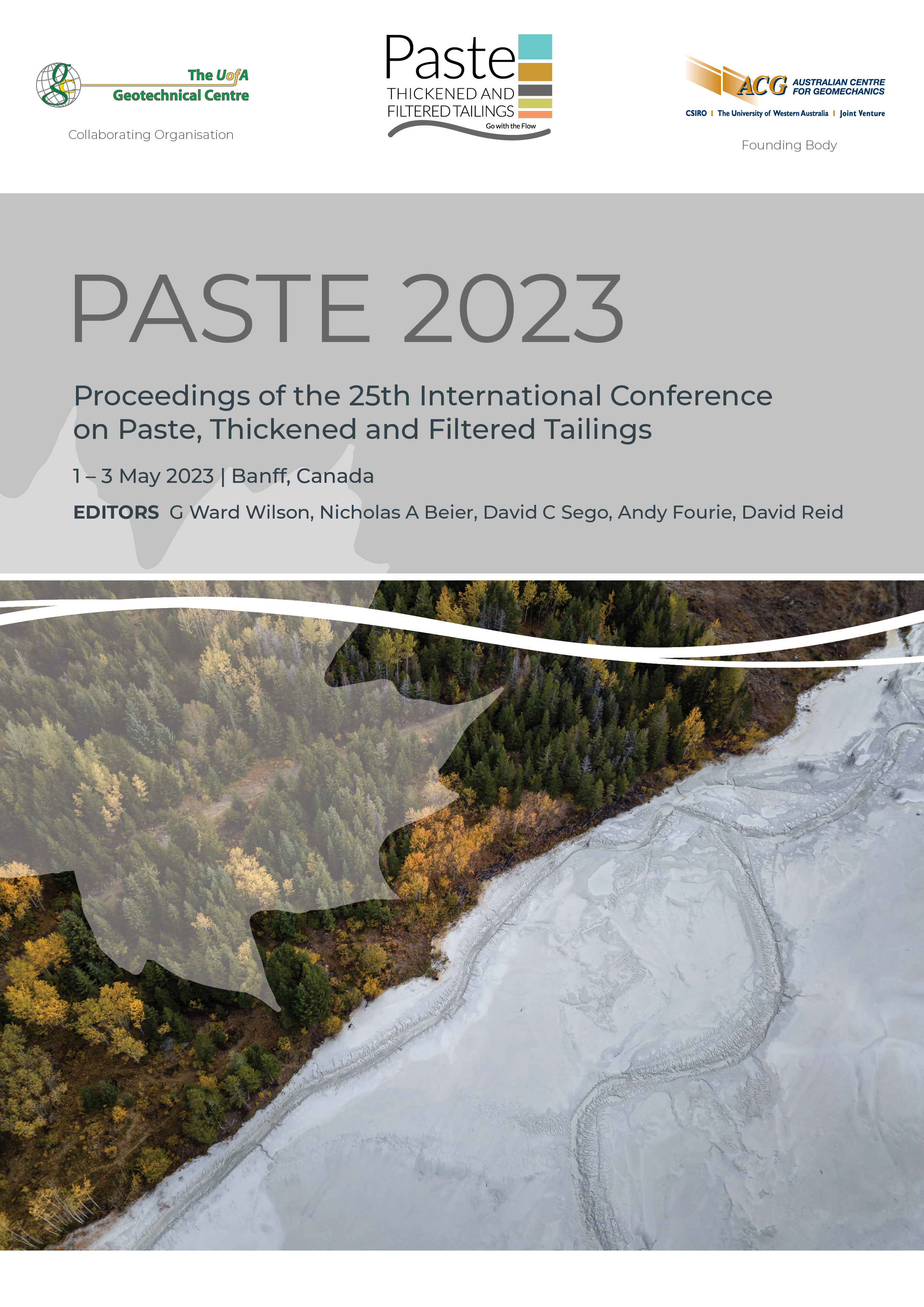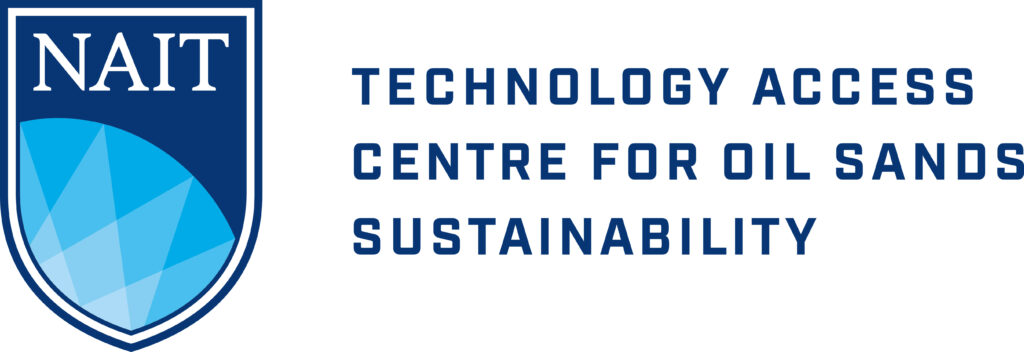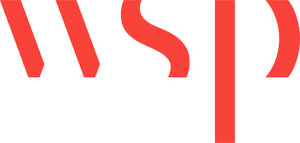Cemented paste backfill strength profiles for continuous pouring and liquefaction resistance

|
Authors: Grabinsky, MW; Thompson, BD; Veenstra, RL |
DOI https://doi.org/10.36487/ACG_repo/2355_19
Cite As:
Grabinsky, MW, Thompson, BD & Veenstra, RL 2023, 'Cemented paste backfill strength profiles for continuous pouring and liquefaction resistance', in GW Wilson, NA Beier, DC Sego, AB Fourie & D Reid (eds), Paste 2023: Proceedings of the 25th International Conference on Paste, Thickened and Filtered Tailings, Australian Centre for Geomechanics, Perth, pp. 257-270, https://doi.org/10.36487/ACG_repo/2355_19
Abstract:
Current practice for backfilling tall stopes (e.g., long hole or Alimak) with cemented paste backfill (CPB) involves an initial plug pour to protect the barricade, followed by a main pour for the remaining stope. Many mines use higher binder content in the plug to accelerate curing time, supporting continuous pouring (i.e., no plug cure time before starting the main pour). An analytical solution to assess the required plug strength for continuous pours was recently proposed in a paper by Grabinsky et al. (2021). Similarly, various heuristics have been published suggesting a minimum Unconfined Compressive Strength will be sufficient to prevent CPB liquefaction under even the most implausible extreme loading events. However, practising mining engineers would benefit from a more straightforward design approach to assess the suitability of their backfill’s evolving strength in continuous pour and liquefaction resistance design issues. To this end, the authors have found it useful to consider the concept of a Strength Profile with depth in the plug, recognising that this Strength Profile is transient (i.e., changing with time) and must be considered for different critical stages of the plug pour and main pour. The Strength Profile design concept is explained in this paper and demonstrated using key case histories from mines where the backfill was previously monitored during continuous pouring and where the backfill materials were extensively characterised in the laboratory.
Keywords: cemented paste backfill, continuous filling, plug stability analysis, liquefaction resistance
References:
Alcott, J, Dallaire, D & Belem, T 2019, ‘Pastefill optimization at Hecla Quebec’s Casa Berardi mine’, in Proceedings of the 53rd US Rock Mechanics/Geomechanics Symposium, American Rock Mechanics Association, Alexandria, paper no. ARMA-2019-0231
Fahey, M, Helinski, M & Fourie, A 2010, ‘Consolidation in accreting sediments: Gibson’s solution applied to backfilling of mine stopes’, Géotechnique, vol. 60, no. 11, pp. 877–882,
Gibson, RE 1958, ‘The progress of consolidation in a clay layer increasing in thickness with time’, Géotechnique, vol. 8, no. 4, pp. 171–183,
Grabinsky, M, Jafari, M & Pan, A 2022, ‘Cemented Paste Backfill (CPB) material properties for undercut analysis’, MDPI Mining Journal, Special Edition on Application of Empirical, Analytical, and Numerical Approaches in Mining Geomechanics, vol. 2, no. 1, pp. 103-122,
Grabinsky, M, Thompson, B & Bawden, W 2021, ‘Required plug strength for continuously poured cemented paste backfill in longhole stopes’, MDPI Mining Journal, Special Edition on Application of Empirical, Analytical, and Numerical Approaches in Mining Geomechanics, vol. 1, no. 1, pp. 80-99,
Helinski, M, Fahey, M & Fourie, A 2007, ‘Numerical modeling of cemented mine backfill deposition’, Journal of Geotechnical and Geoenvironmental Engineering, vol. 133, pp. 1308–1319,
Pan, A 2019, Mechanical Properties of Cemented Paste Backfill under Low Confining Stress, Master’s Thesis, University of Toronto, Toronto,
Potvin, Y, Thomas, E & Fourie, A 2005, Handbook on Mine Fill, Australian Centre for Geomechanics, Perth.
Shahsavari, M, Jafari, M & Grabinsky, M 2022, ‘Influence of load path and effective stress on one-dimensional deformation of Cemented Paste Backfill (CPB) during deposition and curing’, Geotechnical and Geological Engineering, vol. 40, pp. 2319-2338,
Suazo, G, Fourie, A & Doherty, J 2017, ‘Cyclic shear response of cemented paste backfill’, Journal of Geotechnical and Geoenvironmental Engineering, vol. 143, no. 1, article no. 04016082,
Skempton, AW 1951, ‘The bearing capacity of clays’, in Proceedings of the Building Research Congress, London, England, 11-20 September 1951, Institution of Civil Engineers, London, pp. 180-189. Reproduced by permission, National Research Council of Canada,
Thompson, B, Bawden, WF & Grabinsky, M 2012, ‘In situ measurements of cemented paste backfill at the Cayeli Mine’, Canadian Geotechnical Journal, vol. 49, pp. 755–772, doi.org/10.1139/t2012-040@cgj-ec.2015.01.issue-1
Thompson, B, Grabinsky, M & Bawden, W 2011, ‘In situ monitoring of cemented paste backfill pressure to increase backfilling efficiency’, CIM Journal, Canadian Institute of Mining, vol. 2, no. 4, pp. 199–209.
© Copyright 2025, Australian Centre for Geomechanics (ACG), The University of Western Australia. All rights reserved.
View copyright/legal information
Please direct any queries or error reports to repository-acg@uwa.edu.au
View copyright/legal information
Please direct any queries or error reports to repository-acg@uwa.edu.au



